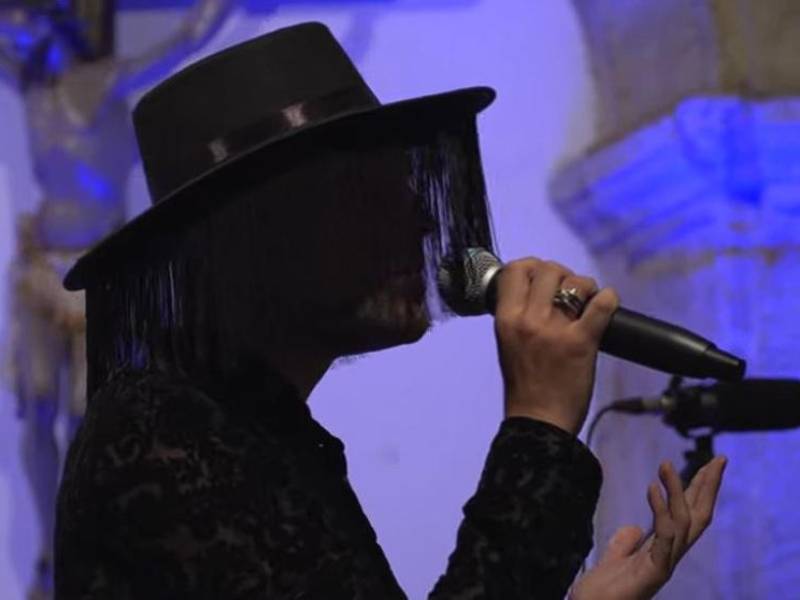There are no exact records of the origins of most of the Holy Week celebrations in Peñafiel, but there is ancient documentation of almost all the brotherhoods. Recently Alberto García Lerma has published the book History of the Confraternities and Confessional Corporations of Peñafiel (2021), which contains a good part of this documentation, although, unfortunately, it is limited with respect to the Holy Week celebrations, but if it is mentioned, as, for example, in the writing of the Brotherhood of the Slaves of the Blessed Sacrament of María de Mediavilla, in its books II (1640-1710) and III (1701-1932).
It is certain, however, that, as in the rest of the Christian World, there have long been religious and liturgical ceremonies, services and masses on the most important days of Passion Week. It is also possible that there was a procession and, of course, there was the Via Crucis, since from time immemorial there was a Calvary near the old convent of San Francisco, on a street that still bears the name of Las Cruces today.
In all probability also, the custom of making processions commemorating the Passion, during Holy Week, arose as a result of the Council of Trent (1545-1563). Several of the historical brotherhoods of Peñafiel date back to that time. For their processions, in some cases, possibly already existing images were used, such as, perhaps, that of the Christ of the Good Death. And new figures and steps were ordered to be carved. It is no coincidence, therefore, that several of the images of the Peñafiel steps correspond to the 16th and 17th centuries precisely: Christ tied to the Column, the Dolorosa or the recumbent Christ, as well as the images of Mary Magdalene and Saint John that accompany the Christ of the Good Death. It is more than possible that some of the lost images of which there is oral news were also from this time, such as the Kiss of Judas and the Holy Supper, which were also paraded until the mid-20th century.
It seems that in the 16th century it was the monks of the convent of San Francisco who were most interested in these processions, since several of the steps mentioned, in addition to the old Nazarene, come from that monastery and were collected when the exclaustration, due to the Confiscation, either in the nearby convent of Santa Clara (Christ tied to the column, Nazarene, Dinner, Kiss), or in the parish of Santa María (Dolorosa). However, the Dominicans of the convent of San Juan and San Pablo, today San Pablo, were not far behind, since they commissioned at the same time, in the second half of the 16th century or the beginning of the 17th, the recumbent Christ and, perhaps a little Then, the Soledad, a dress image that solemnly closes the Passion procession on Good Friday.
Several of the medieval brotherhoods and those created during the Modern Age survived until the end of the 19th century, as Alberto García Lerma has shown in his book, and we can assume that they continued to display their images and crosses during Holy Week. However, it seems that there was a slow decline, which caused many of them to disappear. The situation changed completely, however, when, from the end of that same 19th century and in the first decades of the 20th century, new brotherhoods were created, which took the old images as the center of their devotions. The last of these brotherhoods was born in the post-war era, that of the Nazarene.
After a period in which they languished somewhat, coinciding in part with the new liturgical trends of the Second Vatican Council, in the 80s and 90s of the 20th century the brotherhoods of Peñafiel have experienced an extraordinary resurgence, with the incorporation of dozens of new brothers. Furthermore, a healthy rivalry has been created between them, in such a way that they strive to present their steps in the most beautiful way possible, to produce as many penitent brothers as possible and to improve their music bands, in such a way that today Peñafiel day has four extraordinary bands, one from each brotherhood, which are called upon in many places in Spain to participate in their respective processions and which during Holy Week, in their town, accompany the passing of the images and the hoods with a solemnity that excites
The Holy Week of Peñafiel summarizes in itself, therefore, an important part of the history of the town, brings together a notable artistic heritage and today constitutes a social and popular event of the first order, in which, together with religious devotion, one feels the pride of being able to offer a truly magnificent spectacle of beauty, solemnity and emotion. There will not be many towns in Castilla y León that have known how to preserve and even increase this legacy of centuries until reaching the current magnitude of Holy Week in Peñafiel.
























